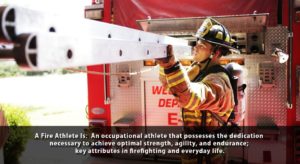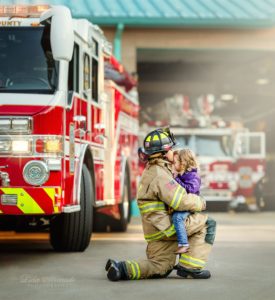By: Robert Avsec, Executive Fire Officer
Yes, you! Because the focus of this year’s Fire Service Safety Stand Down (June 17-23)—even more so than before—is on you and your health and wellness.
According to the International Association of Fire Chiefs (IAFC) in its press release of April 2018:
Firefighters face many health risks, such as heart disease, cancer, diabetes and PTSD, and early detection through annual medical evaluations and physicals saves lives. Safety Stand Down resources and materials will increase awareness among firefighters [emphasis added] of how to educate their physicians on risks, where to go for the latest information on the IAFC occupational hazard profile and how to access available resources about annual medicals/physicals.
That phrase, “emphasis added,” means that I made the five words before it bold-faced type because all the effort in the world by anyone’s fire department will not make a difference if each firefighter and officer doesn’t pay attention. If they don’t become more informed and better educated than they were before. If they don’t make necessary changes to improve their personal health and wellness.
Don’t underestimate stress
Being a firefighter is a physically demanding job. Even as the number of structure fires may be decreasing in many communities, firefighters still must train to do that job. And the training must be as physically demanding as the real thing, right?
communities, firefighters still must train to do that job. And the training must be as physically demanding as the real thing, right?
But let’s not minimize or forget about all the other physical and mental challenges put on the individual. Firefighters are commonly exposed to stressors from these six areas while on the job:
- Being thrust into chaotic, high-stress situations with limited information and the expectation for quick resolution of the problem.
- Technical training that develops a highly specialized set of skills, along with an expectation that failure is not an option.
- A strong sense for taking responsibility for both the problem and its outcome. Listen to the language we use: “We burned that house down.” “I lost that pediatric cardiac-arrest patient.”
- A strong sense of camaraderie and teamwork where there are great pressures not to let one’s team members down in a critical situation.
- A culture that rewards risk taking and quick decision-making and has a negative view of self-doubt.
- The stress of not knowing when the next call may come in, where it’s at, and what it may involve, aka, “Anticipation Anxiety.”
And we haven’t even gotten to the mental stresses involved with actually providing fire and EMS services to the civilian population! Nor have we mentioned the physical effects that stress has on the body. So, we’ll do that right now!
Learn about stress and the body (And everything else makes more sense)
Stress can cause a host of physical problems due to the chemicals and hormones release into the bloodstream, including but not limited to:
- Heart: Increased heart rate or palpitations, rise in blood pressure, increased risk for higher cholesterol levels, and heart attacks.
- Stomach: Nausea, stomach ache, heartburn, weight gain, increased or decreased appetite.
- Pancreas: Increased risk of diabetes.
- Intestines: Diarrhea, constipation, and other digestive problems.
For More Read: The Effects of Stress on Our Brain and Body (From the firefighter’s perspective).
For at least the last 30 years or so, firefighters have equated health and wellness with physical training, e.g., weight training and cardiovascular training. Physical strength and endurance to meet the physical demands of the job was the goal.
But true health and wellness includes many other aspects of a firefighter’s life. Last year, I covered what those other aspects were, and how stress affects them, in a piece I wrote for Action Training Systems, An Intro to Firefighters and Their Mental Health Challenges. In that article, I discussed some of the stressors that exist for firefighters and how identifying the sources of that stress is a major step in learning to cope with on-the-job stress in a healthier way.
Back to Safety Stand Down 2018
So, the take-away from this article is that during Safety Stand Down you—the individual—are responsible for using

Isn’t this why your health and wellness is important?
all the resources made available to you by your department to become, not just aware, but informed and educated about how to keep yourself mentally and physically ready for the challenges of being a firefighter.
What? Your fire department isn’t “doing anything special” for Safety Stand Down 2018? (Perhaps you should be looking for another department, no?).
Fear not. The Safety, Health, and Survival Section of the IAFC—in partnership with the National Volunteer Fire Council—has constructed an awesome website that it “chock full” of resources for your use. So, check it out. And share the site with your fellow firefighters.
You might also be interested in: Preparing for Post-Traumatic Stress
 Fire & EMS Leader Pro The job of old firefighters is to teach young firefighters how to become old firefighters!
Fire & EMS Leader Pro The job of old firefighters is to teach young firefighters how to become old firefighters!